Part one introduces my thoughts on why only whole spices should grace your pantry and parts two and three feature the beginnings of my essential spice list.
Part 4, is more spicy goodness. You will notice I have included galangal and ginger which are technically rhizomes so neither herb nor spice and also lemon grass. I will continue to exclude leafy green herbs which I try and keep in the garden. They may be come the subject of a later series of postings. Or they may not.
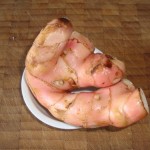
Galangal
I use this in Malaysian, Indonesian and Thai cooking. It is almost, but not quite, interchangeable with ginger. Having said that, if I have run out of one or the other, I will substitute. It pickles as well as ginger does too.
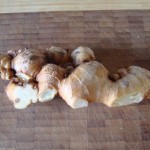
Ginger
Used widely across Asian cuisines and also in European baking. No to mention beverages such as ginger beer and ginger wine! I keep fresh ginger and pickled ginger on hand. The fresh gets used the most, even in baked recipes such as gingerbread. Once you have baked with freshly grated ginger, you will never use that powdered stuff again. Ginger is a wonderful flavour addition to so many dishes whether fresh, pickled, cooked, raw, grated or sliced.
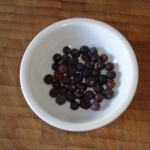
Juniper berries
To be honest, I don’t use juniper berries as much as I would like to but I do always have a supply. Perhaps my fondness to them is directly related to my fondness for gin but I’d like to think it’s more than that. You will never go wrong adding juniper berries to any meaty dish or any dish with alcohol in it. In fact, the stronger tasting the meat, the better the match. I use them most often with pork but they are even better with gamier meats like rabbit.
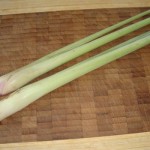
Lemon Grass
Another Asian essential. I use this primarily in Thai, Indonesian and Malaysian cooking. It also features heavily in Sri Lankan and southern Indian cuisine. It is particularly delicious in dishes such as laksa that rely heavily on coconut milk but have a light and clear style of spicy flavour.
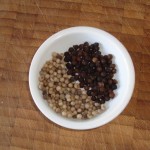
Pepper corns – white, black and green
Yes I keep all three colours on hand. Only white and black feature in the picture because the green were hiding and I didn’t find them until after I was done with the camera. Basically they are all the same berry, picked at different stages of maturity. The green is, not surprisingly the least mature, then the black and the white is the fully mature berry. I decide which to use based on the level of pungency I require. Black is the most pungent, white slightly less so and the green are considerably less pungent. As a gross generalisation, I use black more in Western cooking, white more in Eastern cooking and green primarily in sauces.
Mustard seeds
At the Kitchen Playground, there are 3 uses for mustard seeds. Pickling, in Indian cookery where they are fried until they pop before combining with other spices and in making mustard. They are not pictured because I just discovered that I have run out. They are on the shopping list.
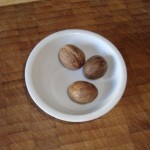
Nutmeg
Sweet and spicy, nutmeg is wonderful grated into many baked goods, desserts and cheesy dishes. It is also a complement to many egg dishes. Eggnog, mulled wines and punches do well with a dash of nutmeg too.

0 Comments